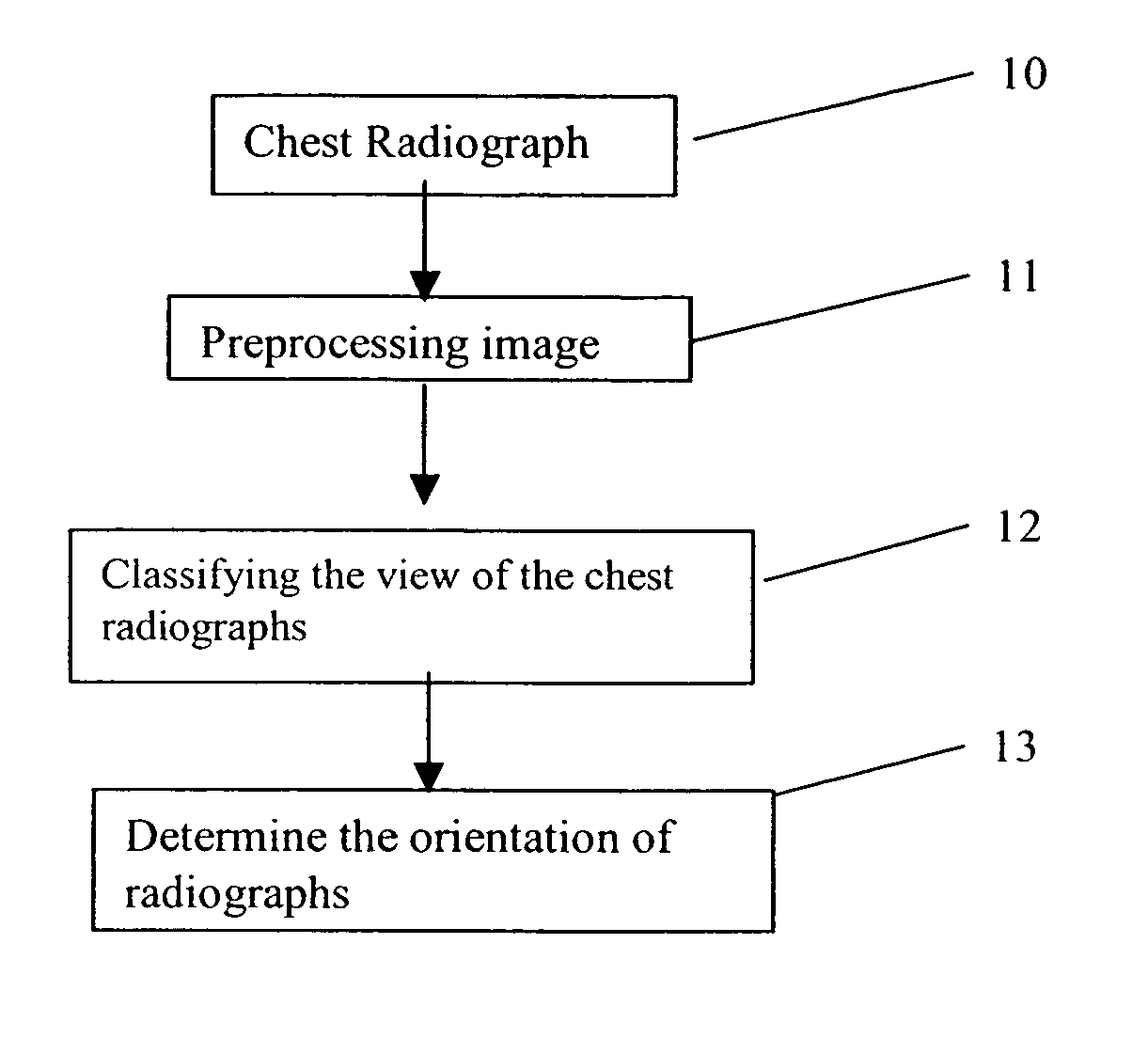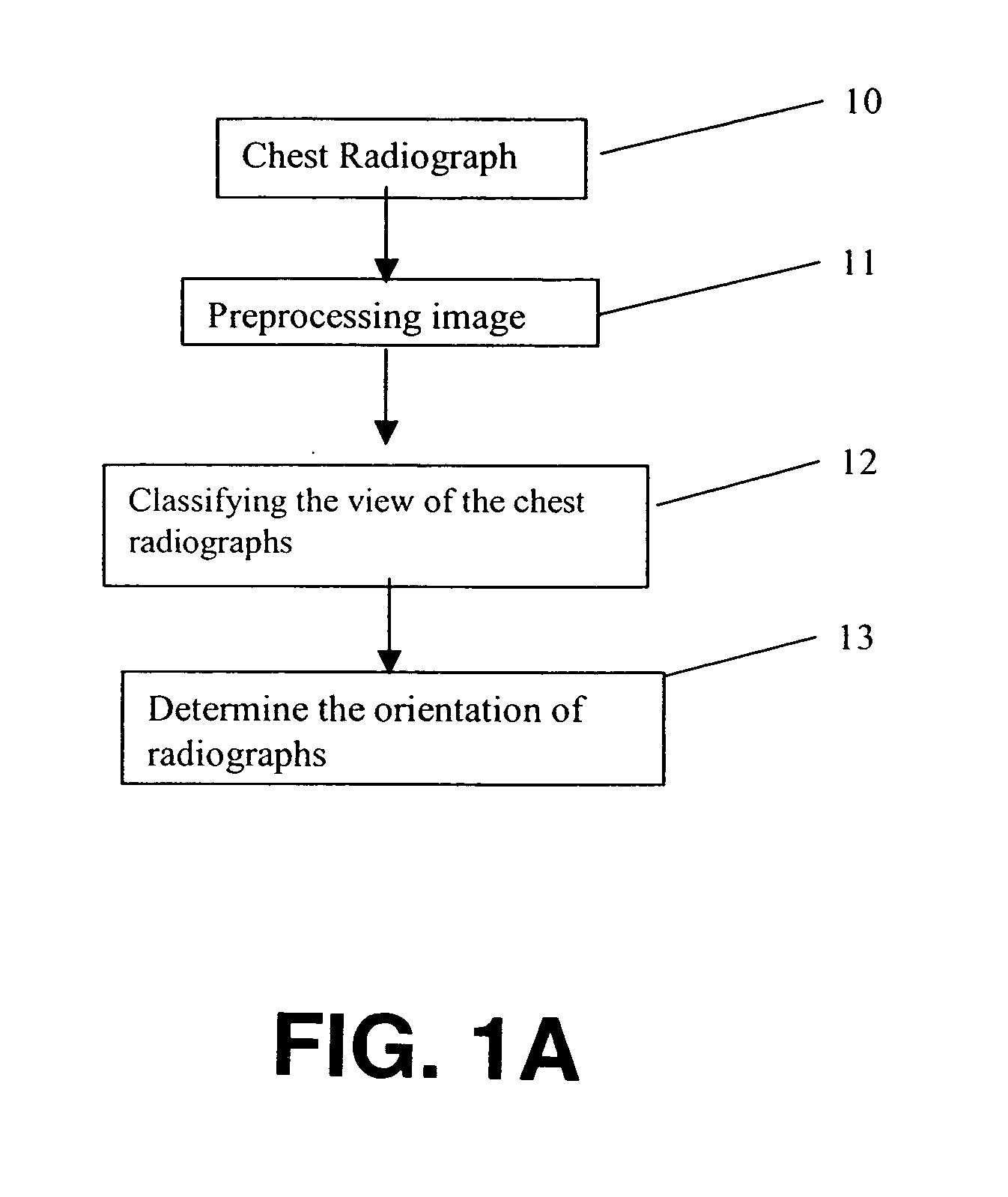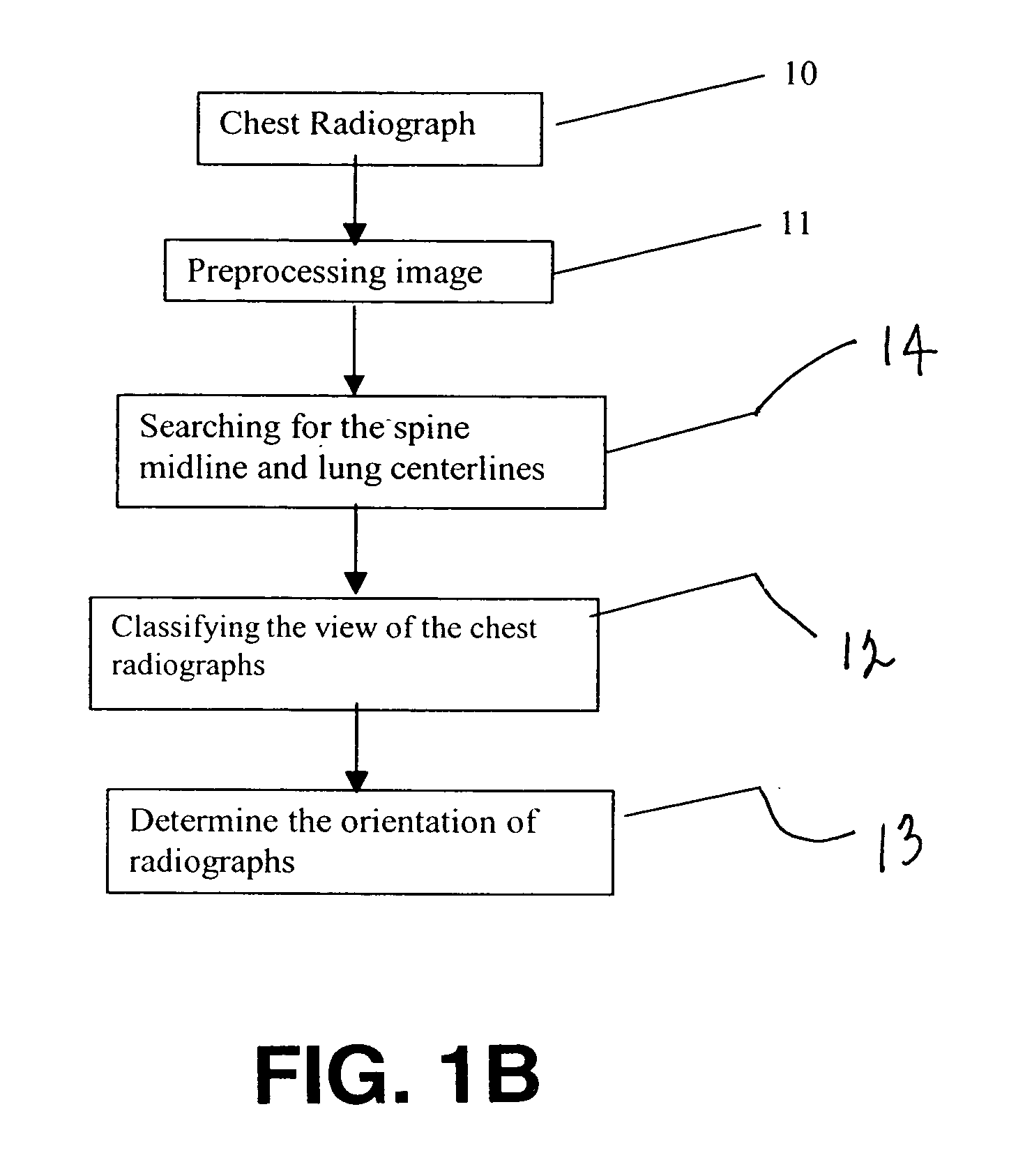Method for computer recognition of projection views and orientation of chest radiographs
a projection view and computer recognition technology, applied in the field of radiograph processing, can solve the problems of introducing errors, insufficient detail of projection profile features, and time-consuming manual generation of template images, so as to avoid interference of collimation areas and other noise, promote efficiency, and promote robustness.
- Summary
- Abstract
- Description
- Claims
- Application Information
AI Technical Summary
Benefits of technology
Problems solved by technology
Method used
Image
Examples
Embodiment Construction
[0034] The following is a detailed description of the preferred embodiments of the invention, reference being made to the drawings in which the same reference numerals identify the same elements of structure in each of the several figures.
[0035] The present invention is directed to a system and method for automatically identifying the projection view and orientation of chest radiographic images. A flow chart of a method in accordance with the present invention is generally shown in FIG. 1A. As shown in FIG. 1A, the method includes three processing steps. First, the input chest radiograph image (step 10) is pre-processed (step 11). Then, three feature lines are detected and a set of features is extracted and compared with the general characteristics of chest PA / AP views to classify chest radiographs (step 12). Finally the orientation of the radiograph is determined (step 13).
[0036] In a further embodiment, shown in the flow chart of FIG. 1B, an additional step can be applied prior ...
PUM
 Login to View More
Login to View More Abstract
Description
Claims
Application Information
 Login to View More
Login to View More - R&D
- Intellectual Property
- Life Sciences
- Materials
- Tech Scout
- Unparalleled Data Quality
- Higher Quality Content
- 60% Fewer Hallucinations
Browse by: Latest US Patents, China's latest patents, Technical Efficacy Thesaurus, Application Domain, Technology Topic, Popular Technical Reports.
© 2025 PatSnap. All rights reserved.Legal|Privacy policy|Modern Slavery Act Transparency Statement|Sitemap|About US| Contact US: help@patsnap.com



